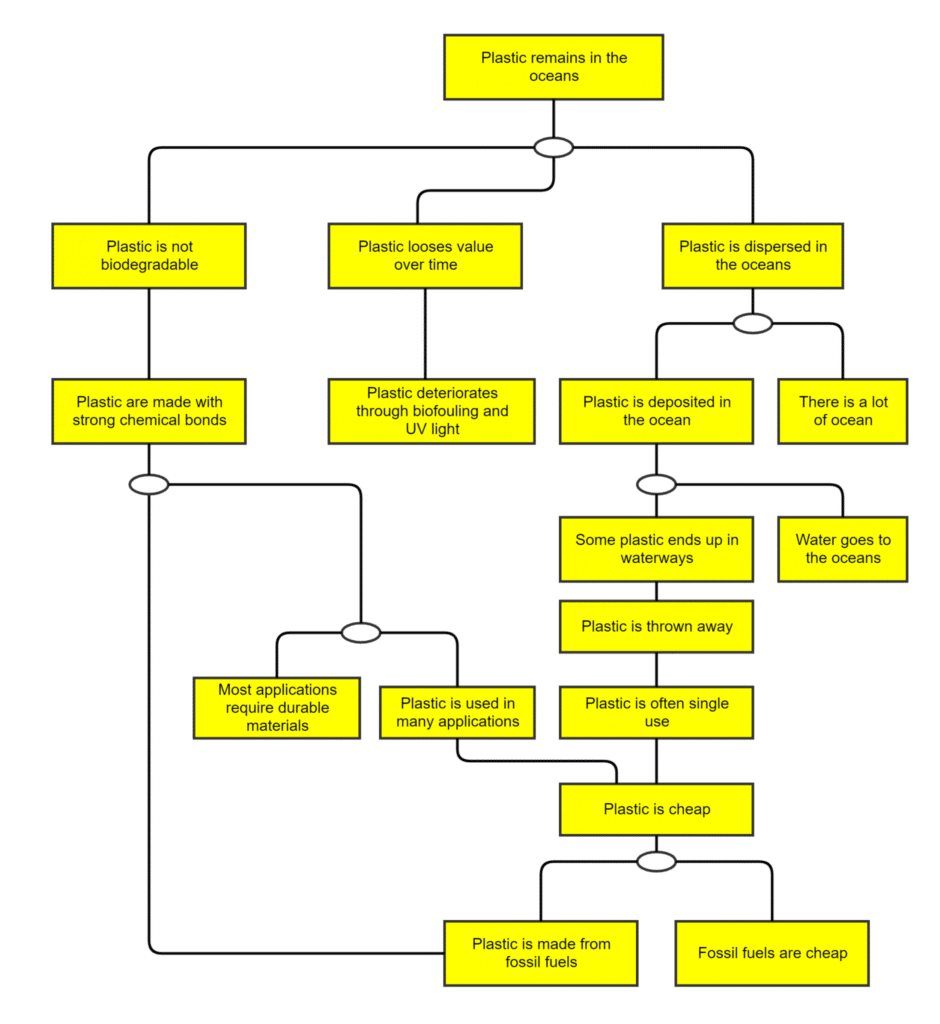You can have an amazing idea for a new product or service, but will it be a hit? There are many reasons why products fail, but one of the most important ones is that solutions do not always solve the real problem. Only by understanding the real problem, you can come up with the right solution. That is why, at Creax, we invest a lot of time and effort to find the real problem.
A good way to find those problems is by using a Current Reality Tree, a tree structure used to split up the main challenge into sub problems and detect the root causes to be solved.
A CRT is a very powerful tool. Easy to teach, yet hard to master. If done correctly it provides you with new insights and focus points for further development.
Imagine you are looking into the problem of microplastics in our oceans. A very complex problem to solve with a lot of issues and different actors. If you want to have an impact, you need to now where you can get leverage. CRT to the rescue. To keep this article digestible, let’s look at a very simplified version of what a CRT could be. (If you would like to see a more elaborated example leading to practical focus points, read our post on the Plastic Soup)

All those microplastics are a nightmare for the biodiversity in our oceans and have a lot of potential health effects on humans. We could stop eating fish, but that would not solve the real problem here. We would still be poisoning the fish and other sea creatures.
But if we can define non-biodegradability of most plastics and the lack of appropriate filtration technology in our waterways and sewers as root causes (among others), we can start looking into solutions to successfully intervene in this process of pollution. Why not make inexpensive filters that owners of a washing machine can use to filter out micro plastics before they hit the sewers? It can be as straightforward as the FIYlter CREAX developed to avoid the plastic soup. Or maybe we can use the chemical properties of plastic to research new technologies to get them out of the water? Recently an Irish teenager won the Google Science Fair Prize for his investigation into the removal of microplastics from water using ferrofluids.
These are very broad examples, but they show how digging for the real problem will make your innovation efforts more fruitful. Many of the problems we are trying to solve are much simpler and more limited in scope than global pollution. A CRT can then clearly identify what needs to be addressed. Don’t just dive in with blind enthusiasm, but look for the real problems that are often hidden beneath the surface.
If you find the REAL problem, your product will surely have a great impact on the market.
Building on two decades of experience with over 1,250 projects in a wide range of industries. Creax is a trustworthy innovation partner.
Building on two decades of experience with over 1,250 projects in a wide range of industries, Creax is a proven innovation expert.